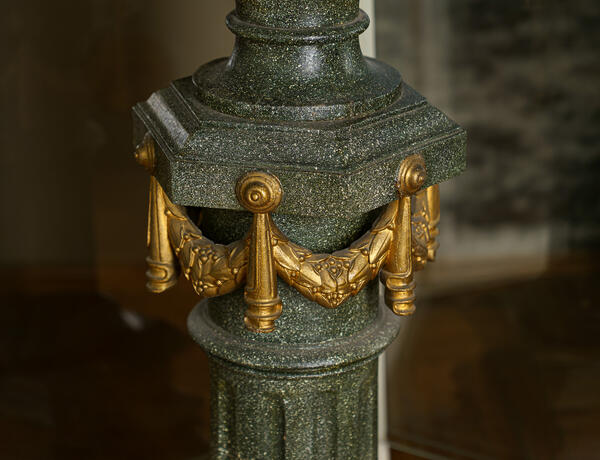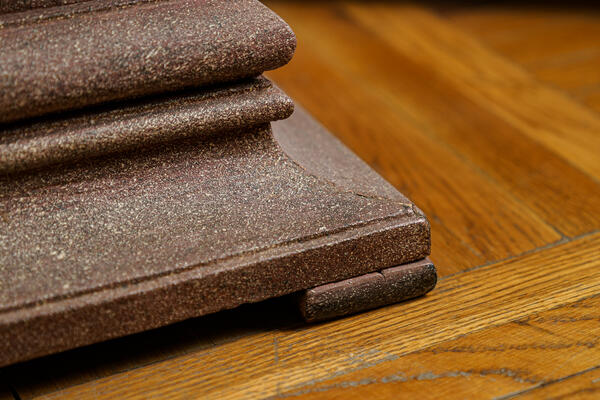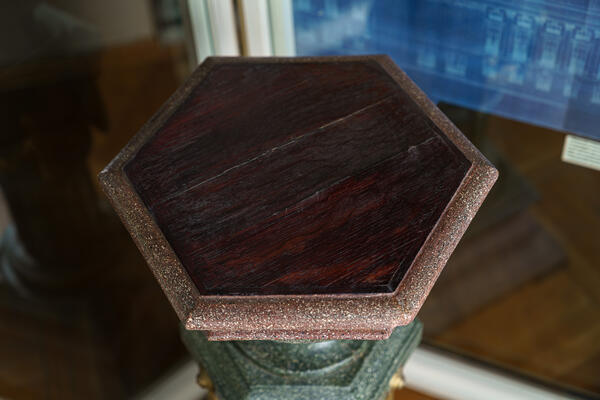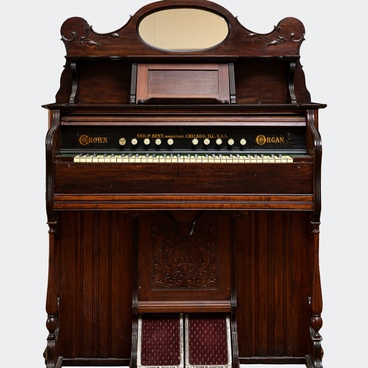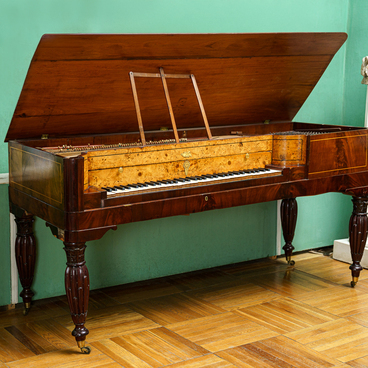Columns appeared in classical antiquity as a structural architectural element supporting the beams of various buildings. As architecture and fashion evolved, columns were more often used as a decorative element.
The pedestal presented in the exhibition, made of artificial stone and shaped like a column on four low legs and a small hexagonal table top is a modern replica and performs a decorative function. It is a stand for a photograph, which attracts the attention of visitors. At the turn of the 20th century, such columns were also used as an element of the interior that could underline the wealth and status of the house owner. Not many people, except aristocracy, rich industrialists, and merchants could afford the expensive and rather impractical element of the interior. Columns combining different materials and techniques look most impressive in the interior.
The table top, made of red-colored artificial
stone, has a cherry-colored wood inlay. The column shaft of green artificial
stone has a hexagonal detail in the center, with a gilded garland of leaves and
tassels descending beneath it. At the bottom of the column is a square stepped
base of red-colored artificial stone. Any column or semi-column consists of
three main parts. The lower part of the column that carries the main weight or
load, is called the base. It is usually made in the form of a square. The main
part of the column is the shaft, which can be round or square in cross-section.
Its surface can be either absolutely smooth or decorated with patterns. Most
attention is always attracted to the decorative part of the column — the
capital. It is the upper part of the column. If the column is part of an
architectural structure, it distributes part of the load of the entire
structure of the building. In the case of a decorative column — a stand, it is
on the capital that the table top is located. The column presented in the
exhibition was purchased for the museum’s collection in 1998.

